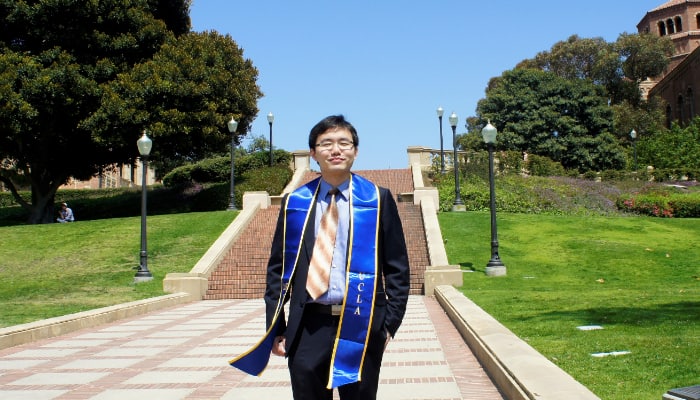BCA Scholar Shi Cong explains how the BCA plays the contrasting roles of regulating the industry yet promoting productivity.
Like all major cities with land constraints and an increasing population, public transport will be the main mode of travel. It is the most space-efficient and environmentally-sustainable option. In Singapore, rail transport infrastructure is being developed rapidly in recent years. We have opened the Downtown Line a few months ago and will have the Thomson-East Coast Line ready in 2019. In the plans are the Jurong Region Line and Cross Island Line.
Since young, I have always been fascinated with engineering. In fact, I am particularly drawn to major tragic incidents, such as the Kansas City Hyatt walkway collapse, the Tacoma Narrows bridge breakdown, and the Chernobyl disaster. These incidents highlight the importance of sound engineering solutions. While Singapore is known for its excellent public infrastructure and high quality built environment (BE), we should be aware that accidents can happen.
I think we can all relate to the need to have safe buildings around us. When I was a student, I had a personal near-miss experience when a window fell a few metres away from me as I was walking home. Thankfully, no one was injured, but incidents like this remind me of the importance of building safety.
The Building and Construction Authority (BCA) Scholarship gave me the opportunity to pursue my studies in the United States. During my time there, I was taken aback by the condition of many of its roads, bridges and schools. Nonetheless, I was grateful to have the opportunity to study alongside my classmates who had the passion, spirit, and drive to bring about change and contribute to their nation. Many of them went on to work in the BE sector over there. Such experiences spurred me to want to improve the sector not just in Singapore, but around the world.
My initial posting at the electrical and mechanical engineering department of BCA exposed me to a broad spectrum of regulatory functions. My scope of work includes inspection and design review of amusement rides, lifts, and escalators prior to the issuance of permits; adverse incident response and accident investigation; and legislative and policy review to ensure that lifts and escalators in Singapore are on par with prevailing international standards.
The learning curve was steep, especially in design review and accident investigation. It demanded familiarity with the codes of practice; quick learning of the design and operation of the machine under scrutiny; coordination with other agencies, such as the police and civil defence; and plenty of guidance from colleagues and industry professionals. The pressure was immense to ensure safe, proper, and timely rectification that would minimise disruption to the public.
Currently, I work at the planning department to shape the future of the construction sector through the Construction Industry Transformation Map. This is a comprehensive plan that pushes for modularisation and digitalisation of the construction process through direct legislation, amendments to the public procurement framework, and support to firms in terms of funding and workforce capability development. There is a strong emphasis on quick learning, critical thinking, synthesis of ideas, and proactive collaboration to assure the relevance and effectiveness of our work.
Interestingly, I have often been questioned on my decision to pursue a career within a regulatory body. Regulators are often perceived to be bureaucratic and resistant to change. However, I think that BCA has done well in this regard. BCA plays a dual role – it regulates the sector while at the same time promotes productivity to sustain the sector’s development. It has been a challenge to execute these very different roles, but it certainly makes for a more exciting career.
Climate change, resource depletion, and a burgeoning population are major challenges facing the world today. With these challenges come many opportunities as well. It’s an exciting new period for the BE sector. In my small way, I hope to realise a sustainable and inclusive environment with safe, smart, and high-quality buildings in Singapore, and eventually in other parts of our world.
CHEONG WAI YANG
BCA-WSP Built Environment Undergraduate Scholarship
Attained: BEng in Mechanical Engineering, NTU
Now: Mechanical Engineer, Infrastructure Department, WSP Consultancy
From: Serangoon JC

